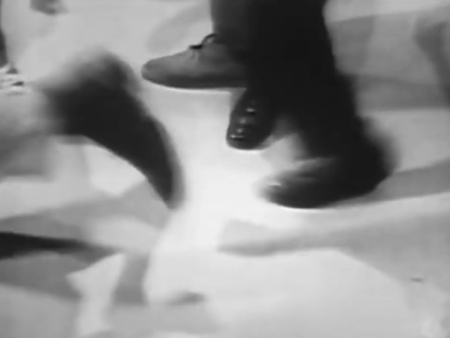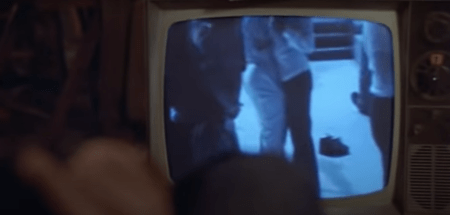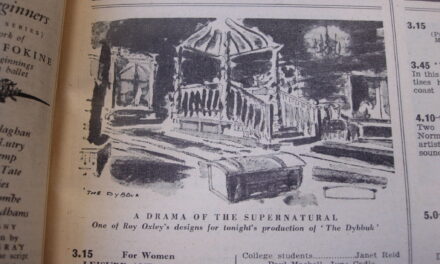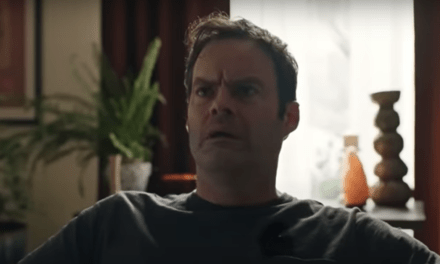My TV Dictionary entry, on the show American Bandstand (ABC, 1952-1989) was born of a struggle I experience as a scholar and videographer in being able to grasp, study and say something about daily television programs. Televisual fiction genres are usually studied as a single text, comprised of several or many episodes. They are usually preserved and available for viewing as such – whether on tape or in digital formats. Most of the non-fiction programming from the first decades of television is either lost or requires careful archival work in order to be viewed in their chronological order of programming. Dana Polan has written about this topic in his chapter on “Forgotten Television”[1].
But American Bandstand can hardly be considered forgotten in any sense of the word. My students all the way over in the Twenty-First Century Middle East recognize the show from its significant influence and “guest appearances” in popular culture. While musical films such as Grease (1978) or Hairspray (1988, 2007) simulate 1960’s daily dance television as an important part of their diegesis, films in other genres such as Taxi Driver (1976) or Confessions of a Dangerous Mind (2002) refer to Bandstand directly as a cultural icon.
This is not surprising when you consider the sheer amount of time this show had been on the air. In its most popular years the show was aired five days a week, for an average of an hour every day. Then, it continued to air weekly, for more than 30 years. With this sort of volume and endurance, calling the show iconic feels almost like an understatement. There were literally thousands of hours of this show. Where can I watch them?
On YouTube, of course. While a few official archival sites hold a recording of one or two episodes, there are several YouTube channels that display hours of American Bandstand footage, usually alongside other objects of televisual nostalgia. Channels such as Times Past Television, ABDancers or YouCanDanceToit are unofficial archives of the show, holding no rights to the material, claiming to upload the footage in order to share their appreciation of the show’s historical and aesthetic qualities. Some clips are only the length of the song being played; some consist of an entire uncut episode (including the fascinating commercial breaks).
As I view these episodes several things occur to me. The first is the lack of certainty as to the authenticity of these materials. I have no corroboration of the dates, names or places posted in the title or details of the clip. The same goes for the content itself – as a videographer (and a user of the internet in the last decades) I can see the ease with which these videos can be altered in many ways. Any shot can be cut at any moment and attached to any other shot from practically any other date (within the same decade at least). It appears that any one of these clips of dancing teenagers could be set to any song and still appear equally as authentic.
This is due to another thing that strikes me as peculiar: the complete disregard for synch and spectacle that I have come to take for granted as a scholar and avid viewer of musical film and television. None of the dancers seem to be concerned with synchronizing themselves to the beat or any other part of the song. Neither does the editing. As the camera presents me with the constant view of the dancers’ backs, I must remind myself of the immense popularity of this show and ask, what was it that was being watched in American Bandstand?
Andrew Goodwin has already brilliantly pointed out that this kind of show is based in a temporal pleasure – that of the countdown. [2] I would like to take this argument further and propose that the countdown is just one possible aspect of a larger temporal pleasure – a heightened sense of the present through repetition. These programs presented their young audiences every day with songs they already know, playing as a background to teens dancing in a way which is clearly meant to suggest casual spontaneity. It is this appearance of spontaneity that reveals what is at the center of these shows – a temporal experience of the present, a distinct now-ness. This sense of Now is key in daily musical television not only through the signification of liveness (“Right now!”) but through these programs’ choices of unchoreographed frame composition, un-musical editing, and the constant repetition of content.
In making my TV Dictionary entry, I attempted to demonstrate that what is at the center of this program is not the music, or the teenagers, but the marking of time created through repetitive display of teenagers dancing to music day after day, week after week. These moments of liveness turn into enormous unofficial archives of a “now” that had transformed into nostalgia through and through. It is also a shaky sense of nostalgia, a curated, possibly edited version of a show that I have never been able to watch in its original format. For me and many like me, it is a fiction of a show, based on hours of mysteriously accessed and anonymously uploaded footage.
I recommend viewing Jiří Anger and Veronika Hanáková’s intriguing entry on Vodník, which raises important questions (and inspires the creation of more Dictionary entries) about local television around the world:
Tomer Nechushtan is a Ph.D. candidate and Tisch Film School scholar at Tel Aviv University, currently researching the impact of digital voice technologies on film and new media. She teaches at The Steve Tisch School of Film and Television at Tel Aviv University and at the Bezalel Academy of Art and Design, Jerusalem. Her article ‘Keeping time: Song and dance as phenomenological experiences of historicity in the film musical’ has recently been published by the Journal of Historical Fictions.
Footnotes
[1] Polan, Dana. “37. It’s Fun to Eat: Forgotten Television”. How To Watch Television, edited by Ethan Thompson and Jason Mittell, New York, USA: New York University Press, 2013, pp. 347-354.
[2] Goodwin, Andrew. Dancing in the Distraction Factory: Music Television and Popular Culture, University of Minnesota Press, 1992, pg. 145.







